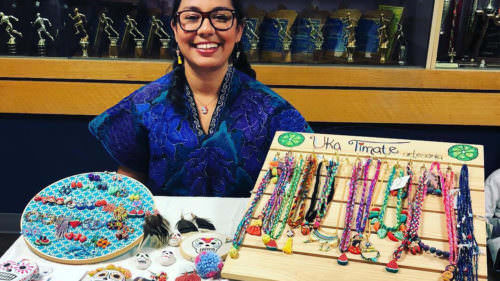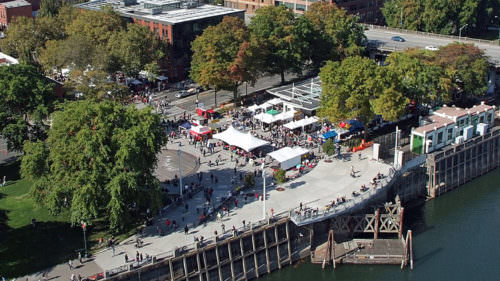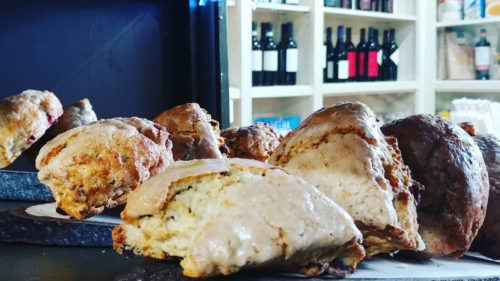During her classes with students, Brigette McConville divulges that while Native Americans weren’t the originators of beading materials, the craft really resonated with them. “The first glass bead that was traded along the Columbia River came from Murano, Italy,” says McConville, an active member of the Confederate Tribes of Warm Springs, whose great-great-grandfather traded on the river.
McConville teaches weaving and Columbia Plateau beading as part of WildCraft Studio School’s Native Arts program. She also serves as a tribal council representative and, with her husband, owns and operates Salmon King Fisheries, a company in Warm Springs specializing in fresh and smoked salmon, and that also sells Native jewelry. She has deep roots in the area, with branches of family members extending into several Oregon tribes.
Through the WildCraft platform, McConville shares a rich context with students so they are able to gain a deeper understanding and appreciation of her traditional craft. “I want [students] to learn from the first person — information about where it comes from,” she says. “I always share my culture and my tribal history along with it.” She brings samples of different projects, both finished and in different stages of completion, for students to draw inspiration from.
Oregon has long been known as fertile ground for artisan culture, but Native communities are often left out of the conversation. “Creating a platform for Native people of this region to share their skills, cultures and traditions in ways that felt empowering rather than exploitative has been a primary focus [of WildCraft] since the beginning,” says WildCraft founder Chelsea Heffner, a Portland artist, designer and former teacher at Pacific Northwest College of Art.
“Native people are the original artists and craftspeople of this area, and that crucial piece is not often acknowledged in conversations,” she adds. “Our contribution has been in creating visibility for Native artists and starting conversations about the importance of representation.”
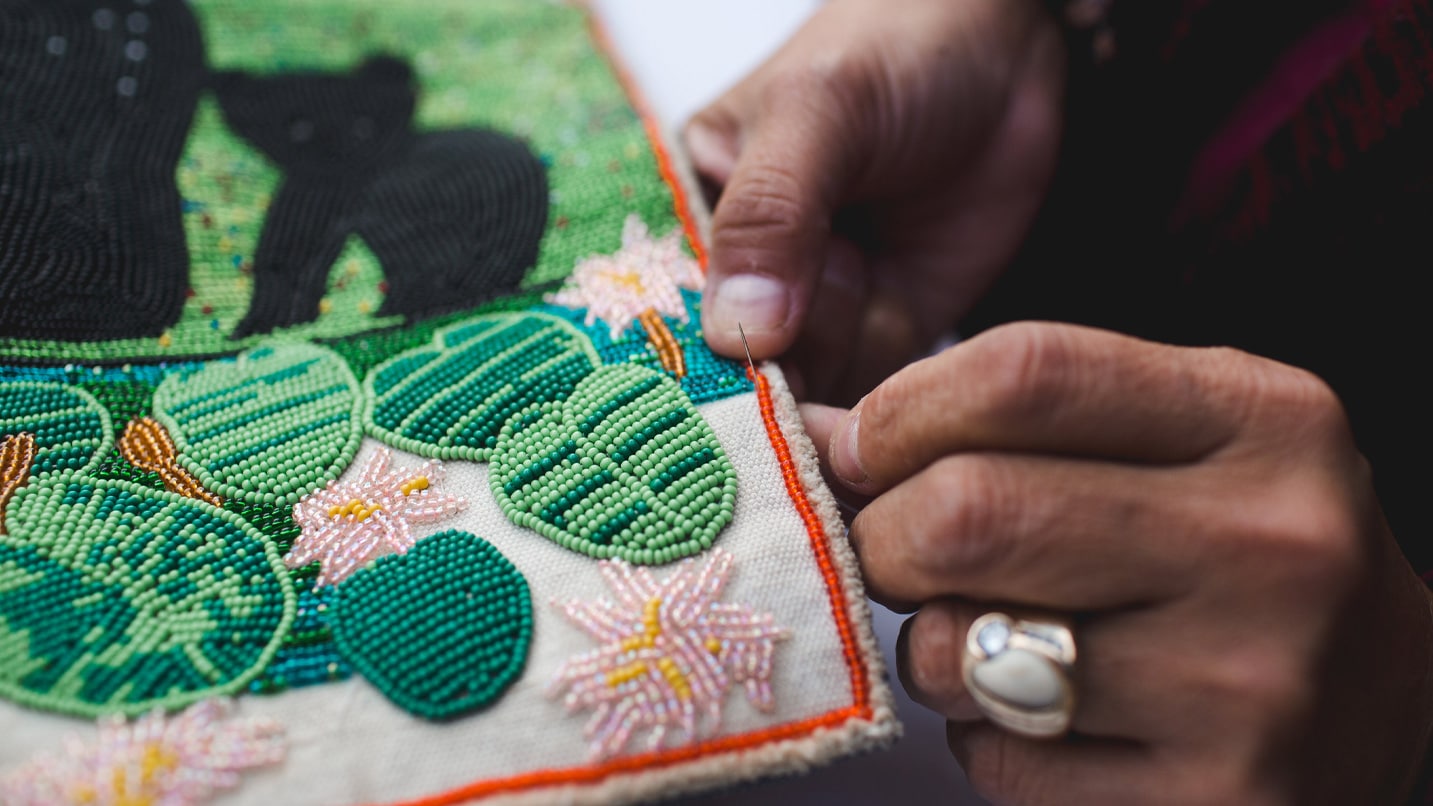
Preserving Native Traditions
McConville — who goes by the name Salmon Queen on Instagram — learned to bead from her grandmother, and says when she was growing up, the craft used to be more family-oriented. With the tribe losing a lot of elders, a shift occurred, and now younger generations typically learn these traditions in class-based settings on reservations and through programs spearheaded by organizations such as the Confluence Project and the Native American Youth and Family Center.
In the case of the first glass beads that came to the Columbia Plateau, they hailed from Murano, Italy, a series of islands just north of Venice that has been renowned for its glassmaking for centuries. As the story goes, when traders brought blue glass to the Pacific Northwest, the Native peoples became enamored. Aside from seeing it in water and sky, blue is somewhat of a rarity in nature, and Natives were unable to produce it in their paints with the materials they sourced from the land.
Since its inception in 2013, WildCraft has been committed to serving as a conduit for the Native people of the Northwest to share their traditional craft and skills with the public. The program offers scholarships to Native students to take Native arts classes at free or reduced rates in order to provide wider access and to ensure this cultural knowledge is preserved within their own communities.
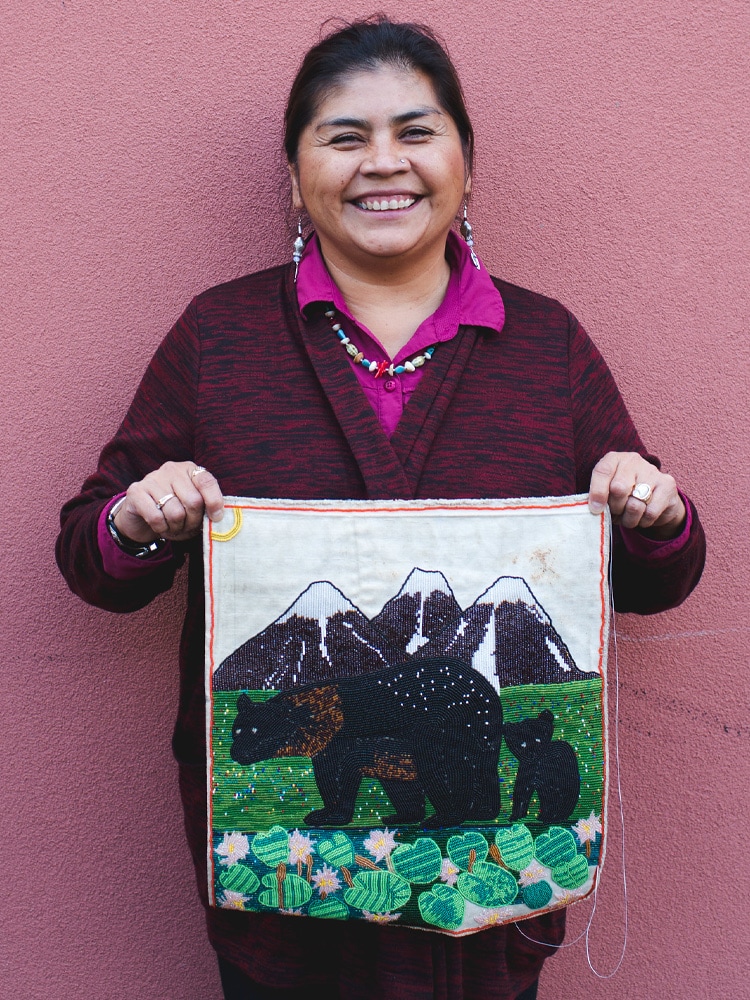
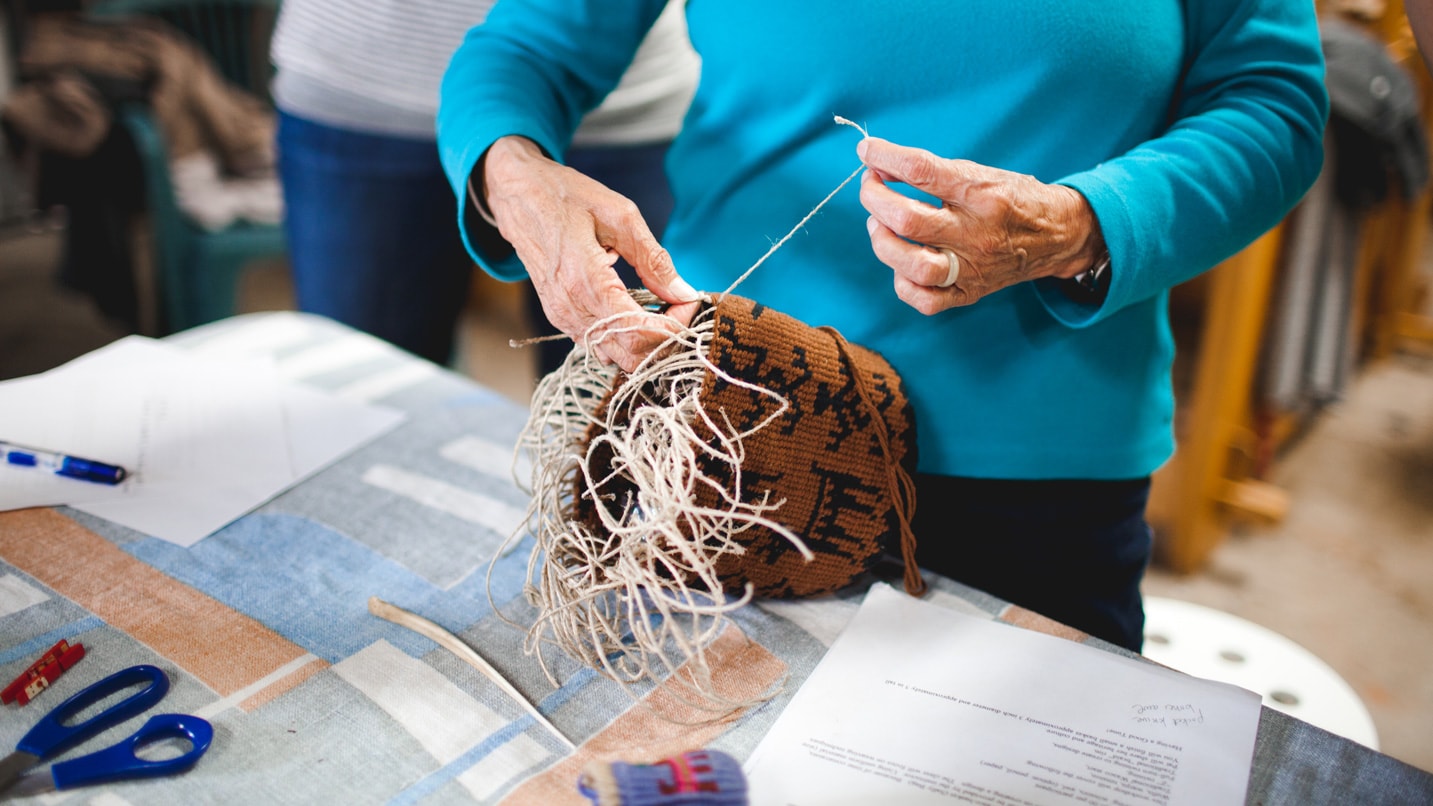
Creativity to Restore the Soul
In the heart of Portland, WildCraft Studio School is a hub of creative activity on the weekends. Sharing a space with a design and architecture studio on Southeast Hawthorne Boulevard since 2016, two spacious workrooms filled with natural light provide ample illumination for in-studio classes.
Heffner says that when she first opened the school out of her personal studio, there were few other craft schools aside from colleges that offered a high-level education that was accessible to working people with set schedules. WildCraft’s model of one- or two-day-long workshops and expanded multiweek intensives allows busy folks to try their hand at a new skill.
Classes are categorized into four subjects — textiles, craft, Native art and nature — and are all accessible to beginners, though the minimum age for participation is 16. With classes ranging from carving wooden wares to cooking and preserving wild foods, students are welcome to explore new-to-them modes of creativity or develop and refine their methodology.
Instructors offer their wealth of knowledge for students to learn technique from and refer to, but also provide a playful and loose format so students can tap into their own creativity. “There’s room to get lost in the creative process, which is so restorative to the soul,” says return student Pamela Rico, an Oregon-based energy medicine practitioner who recently enrolled in a handful of classes to enrich her knowledge base.
The vibrant atmosphere keeps her coming back for more: “The teachers are artists who are really in sync with the gentle spirit of the natural world. These harmonious environments, whether in-studio or outside in nature, make for deeper creative experiences and fun processes.” Classes tend to take on a collaborative nature as students share techniques and perspectives with each other, enriching the creative experience.

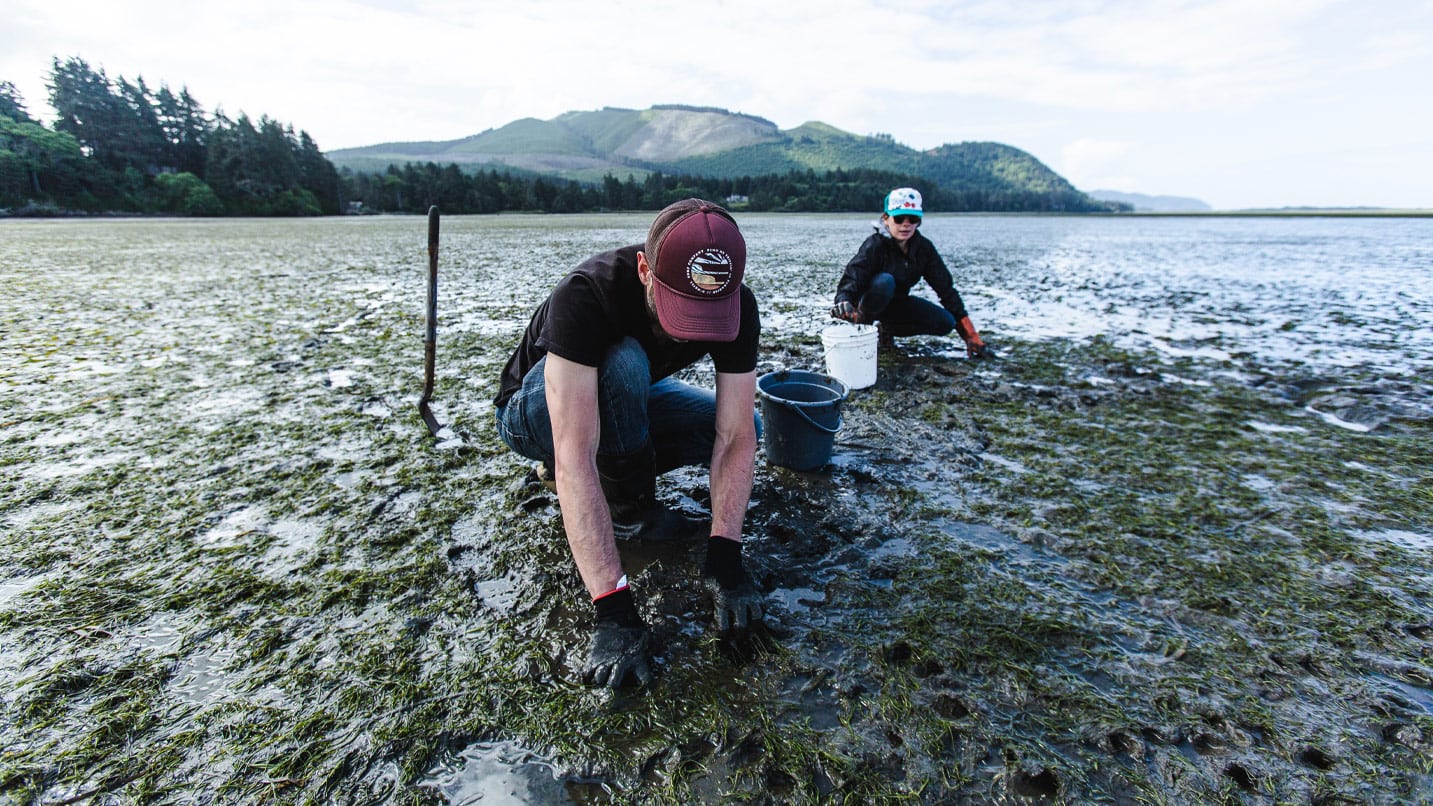
Learning in the Natural World
In addition to studio classes, students seeking an experience in the wild can participate in WildCraft’s off-site nature classes for a deeper connection to Oregon’s land and natural bounty. Students are guided through remote areas near Mt. Hood and in the neighboring Columbia Gorge for mushroom forages, and into the waters of the Oregon Coast to explore intertidal wild foods, seaweeds, clams and mussels.
“Not dissimilar to the local food movement, the understanding of where your materials come from gives depth and dimension to creative practice,” Heffner explains. “I’m a firm believer that limitations make creative work more interesting.” Natural materials that are in tune with Oregon’s well-defined seasons and ever-shifting weather can organically shape a project in ways that synthetic or store-bought materials do not.
For instance, WildCraft’s instructors teach students how to make natural dye, so that students can make a connection to regional plants and specific colors. On a deeper level, they may understand how weather factors like drought can affect the color a natural dyer is able to extract from a particular plant. “It’s a big mental shift for urban Americans to realize they can only ‘get’ a particular plant in a particular place and season,” Heffner says.
Nature-based classes can also offer a unique and holistic view of the cycle of a material. In a class called Clamming and Coastal Edibles, held in Nehalem Bay, instructor Henry Stanley takes care to structure his lesson around ethical harvest. Raised on the Oregon Coast, Stanley surfed, fished and foraged at a young age, and is now a certified permaculture teacher of 10 years, focusing on wild plant identification and natural building.
In his class, students learn the rich context of coastal edibles including local ecology, ethnobotany and the history of the area. Post-harvest, students are then taught another practical application: how to process and preserve the fruits of their labor. The class is wrapped up with a bonus cooking session and meal. Read more about celebrating Oregon’s Indigenous ingredients.
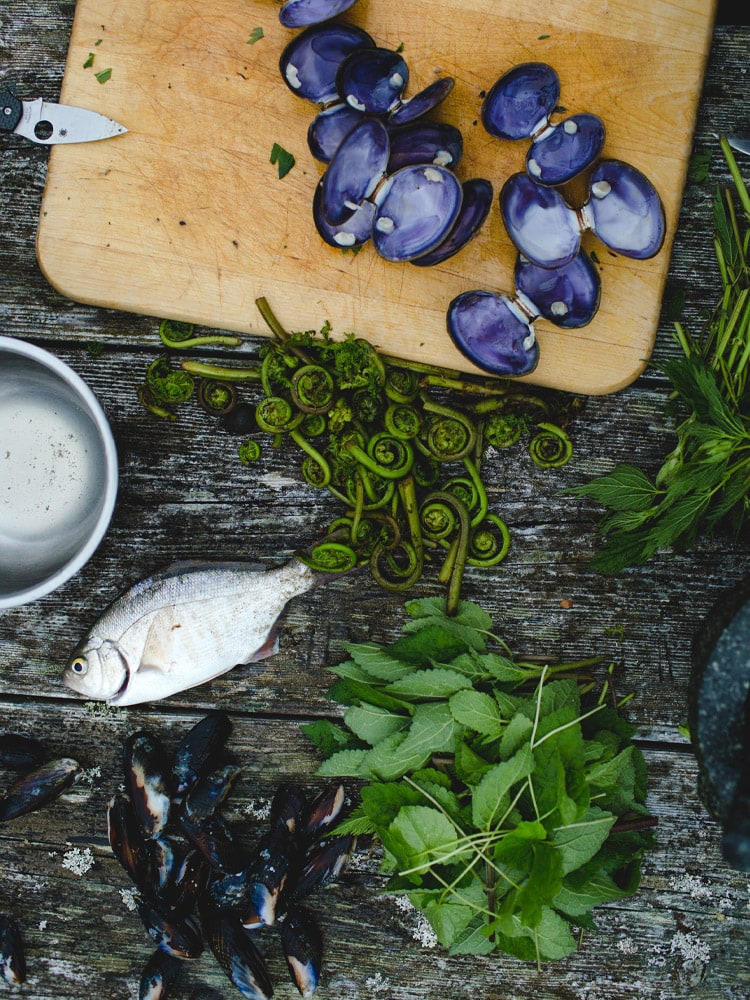
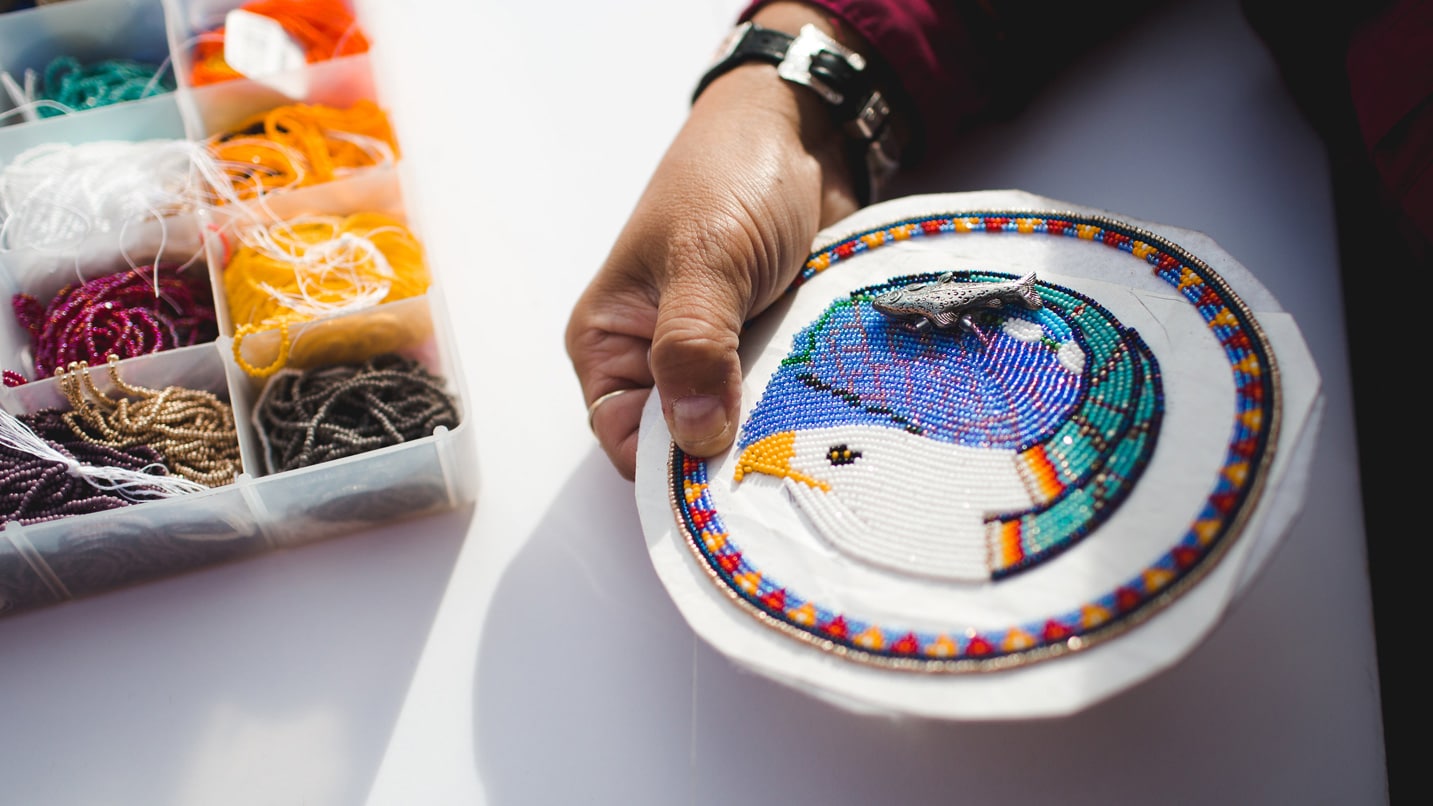
Learn a New Craft
As a small, female-owned and -run business, WildCraft strives to make their classes accessible to a diverse array of adult learners. Their new ACCESS program allows 25 free seats in their studio workshops (Craft, Textiles, Native Art & Studio Art), for a total of 50 free seats each year. Their goal is to provide access to a rich range of educational opportunities to encourage and support BIPOC students to become leaders and teachers in the fields of art, design and craft in the future.
In addition, all Native Arts classes are offered at 50% off tuition for all people of North American Indigenous descent.
Visit WildCraft’s website for the full roster of classes underway. Find everything from hand-carved rings, Columbia Plateau beading and punch-needle rugs to flower farm bouquets, Raku firing and clamming and seaweed foraging.
